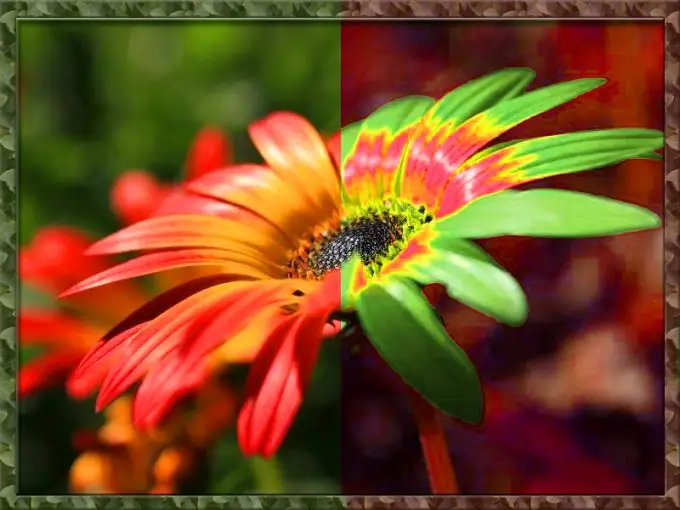The graphic editor Photoshop from Adobe is very popular and needs no introduction. With its help, you can not only process existing images, create collages and photo manipulations, but also draw. For artists, the program offers many flexible tools and color palettes. If you are engaged in digital painting, then having studied the possibilities of Photoshop, you can embody any fantasies on the screen.

How to change the foreground and background colors
Photoshop has a lot of tools. All of them are collected on the vertical toolbar "Tools", which is located in the left part of the main program window. At the bottom of the panel, you can see two colored squares. These are buttons for controlling the working (main) and background color. The color of the front square corresponds to the working color, and the back one - to the background color. By default, the main color is set to black, and the background color is white.
To swap the foreground and background colors, click on the curved arrow located in the Tools panel to the right of the described squares. Or press the x hotkey. If you want to quickly return to the default colors, use the d hotkey. Or click on the Default Foreground and Background Colors icon.
How to flip a gradient
To create a smooth transition from one shade of color to another, Photoshop uses the Gradient tool - "Gradient". By default, the foreground and background colors are used to create the gradient. You can change the color and other settings of this tool in the "Gradient Editor" - Edit Gradient. To do this, simply click the icon on the preset icon.
In the editor, you can not only change the two original colors, but also add new shades. And, in addition, adjust the gradation of the transition and transparency. To swap the colors of the gradient, check the Reverse checkbox. This function is convenient in that it is immediately available in the settings panel, there is no need to reopen the editor and move the color sliders.
Hue / Saturation Adjustment Layer
You can swap the colors in places in the image using a Hue / Saturation adjustment layer. In this case, substitution is made by replacing one color with another. If the Edit menu is set to Master, then the Hue slider affects all colors in the image. When you move it, the green color will change to red, blue to green, and so on.
To replace only certain colors in the image, you must select the desired range by specifying it in the Edit drop-down list. For example, to replace red pixels with green ones, select the Reds option and set the Hue slider to +50. To ensure a smooth color transition, Photoshop automatically smooths the edges of the red areas. The default amount of blur is 30 pixels.
The Saturation slider changes the saturation of the color. The value of this parameter can vary from -100 (which means complete discoloration) to +100 (in this case, the colors become unnaturally bright). Therefore, to replace any color in the image with gray, it is enough to select the desired range in the Edit list and set the Saturation value to 100.






